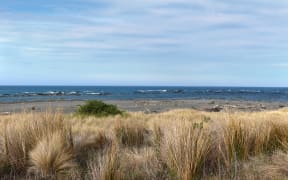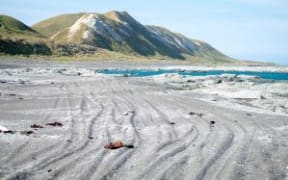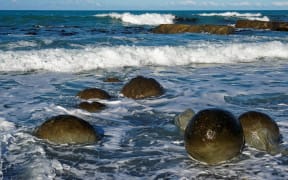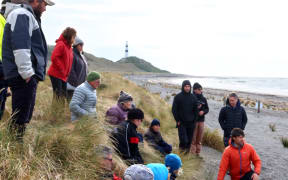From barriers on the beach to a blanket ban of vehicles, the options for protecting Marlborough's quake-hit east coast have ranged from controversial to more controversial.
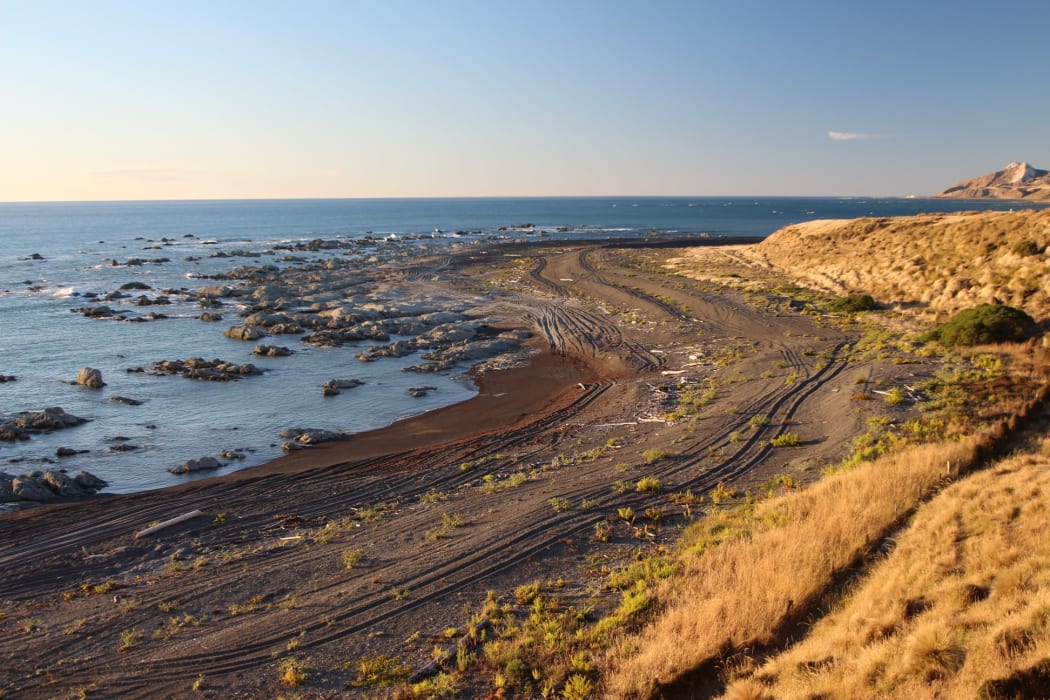
Vehicle tracks running along the east coast. Photo: Supplied via LDR
A new report, released last week, shows the Marlborough District Council was between a rock and a hard place before opting for a bylaw banning all vehicles, including quad bikes, from a 45km stretch of coastline.
The only exception was for fishers launching their boats at two distinct spots; one on Marfells Beach and one on Ward Beach.
The bylaw was released last Thursday after a year-long tug-of-war between those who thought vehicles damaged the coast and those who thought most quad bikers were eco-conscious.
The bylaw would go out to the public from mid-July.
During its release last week, Marlborough Mayor John Leggett said the public should look at the options the council had to consider before landing on a bylaw, to help with their submissions.
Here are the alternatives to the bylaw:
Do nothing
The biggest drawback to doing nothing was that it would land the council on the wrong side of the law, said Forest and Bird top of the south region manager Debs Martin this week.
Drivers have long been able to cruise the region's east coast, but access to it became easier after the Kaikōura earthquake in 2016 exposed flat platforms of reef which used to be underwater.
Martin approached the council after becoming concerned that the increase in vehicle access was hampering the recovery of the environment, and putting people and species at risk. Her concerns were echoed by residents of the coast.
The council agreed to investigate and found the damage caused by the earthquake, coupled with an increase in motor vehicles, was piling pressure onto the area's ecosystems.
Martin said the council could not allow this to continue.
"The council has a moral obligation not to allow people to continue to kill wildlife, whether intentional or unintentional. They also need to protect biodiversity under national laws."
The council was required to protect areas of environmental significance under the Resource Management Act, the Coastal Policy Statement, and its own environment plan.
"Councillors came into this process with an open mind that there might be other solutions, but as time has gone on, it's become clear that they don't have another option," Martin said.
"This bylaw is not just a knee-jerk reaction."
Build barriers to block vehicles
Barriers were already used to keep vehicles out of the region's parks and reserves, so why not also the beach?
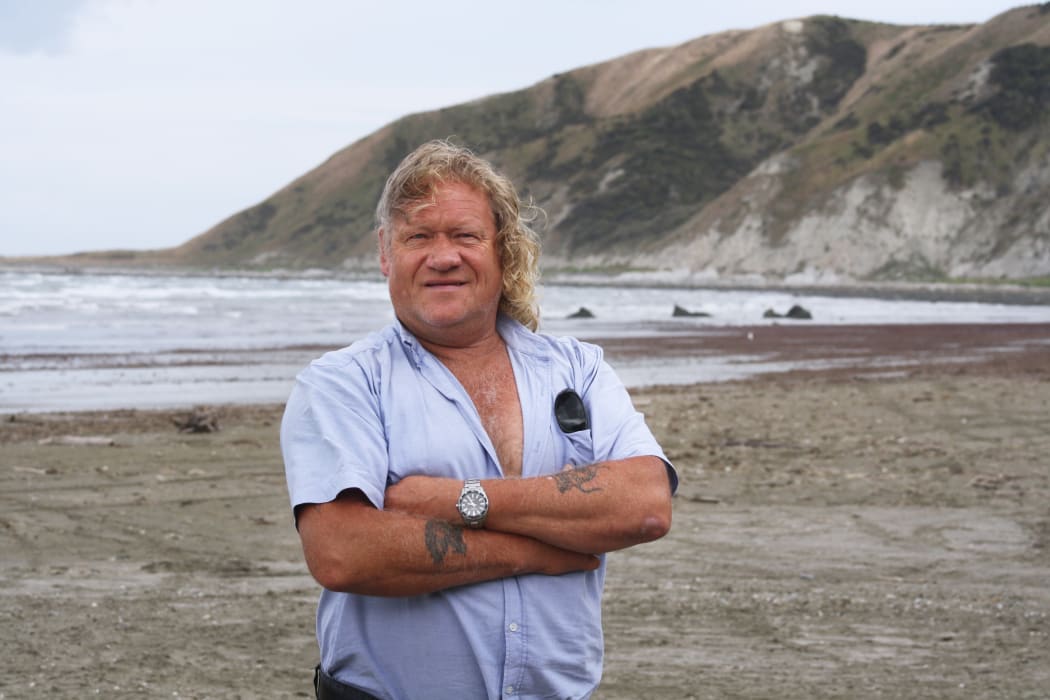
Recreational Access with Education member Mark Wills built several log barricades to keep motorists from damaging areas above the high tide line. Photo: LDR / Chloe Ranford
It was an idea already taken up by quad-biking fishermen, who built log barricades along parts of the coast to educate drivers and keep them away from important ecological areas.
One of those fishermen, Mark Wills, said barriers that blocked four-wheel-drives but allowed in quad bikes was a better alternative to the vehicle ban proposed in the bylaw.
He believed beach walkers did more damage than quad bikers, as vehicles had less downward pressure.
"We could have averted all this if they'd put down barriers."
The council had decided not to make vehicle barriers its main solution, but had not ruled them out, saying fences and gates could be built at access points to complement the new bylaw.
Change Marlborough's environment plan
When the council finished writing its new environment plan in June 2016, it had no idea a quake would hit five months later.
It had already drawn a line separating land and sea - and the rules for each - when the earthquake raised the region's coastline out of the ocean, in some places up to 6m.
This left several rugby pitch fields worth of land along Marlborough's east coast zoned 'coastal marine' - an area where ships could legally anchor and residents could swim.
Council environmental policy manager Pere Hawes said the council had considered adding rules to its environment plan that prevented vehicles from driving in 'coastal marine' areas.
This was similar to what Bay of Plenty Regional Council and Greater Wellington Regional Council had done.
But changing the environment plan would take longer than setting up a bylaw, especially because the council was still resolving environment plan appeals, so the idea was shelved.
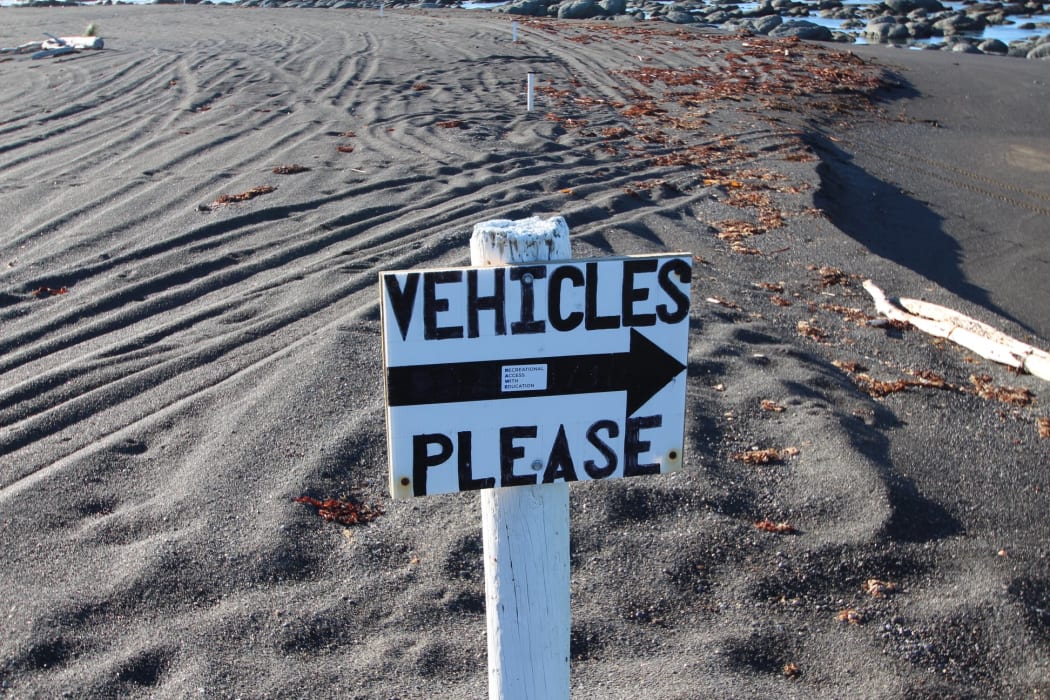
The Recreational Access with Education group, made up of quad-biking fishers, has tried to educate motorists using signs. Photo: Supplied via LDR
Close the paper road
Clinging to a large chunk of Marlborough's east coast was a paper road which the public could legally drive up and down.
This unformed legal road (or "paper road", as it only existed on paper) could have been closed to curb vehicle access, had the council not decided this would have been "inefficient".
The road was created before the Kaikōura quake widened the coastline, so did not cover the whole beach, and avoided sensitive ecosystems that were previously under the water.
It also existed in areas that were "inaccessible" to walkers and drivers - like around the Chancet Rocks, north of Ward Beach - and disappeared in two spots for several kilometres.
Educate the public
The council was not convinced education alone would change the behaviour of motorists along the coast, after watching community groups give it a crack for four years.
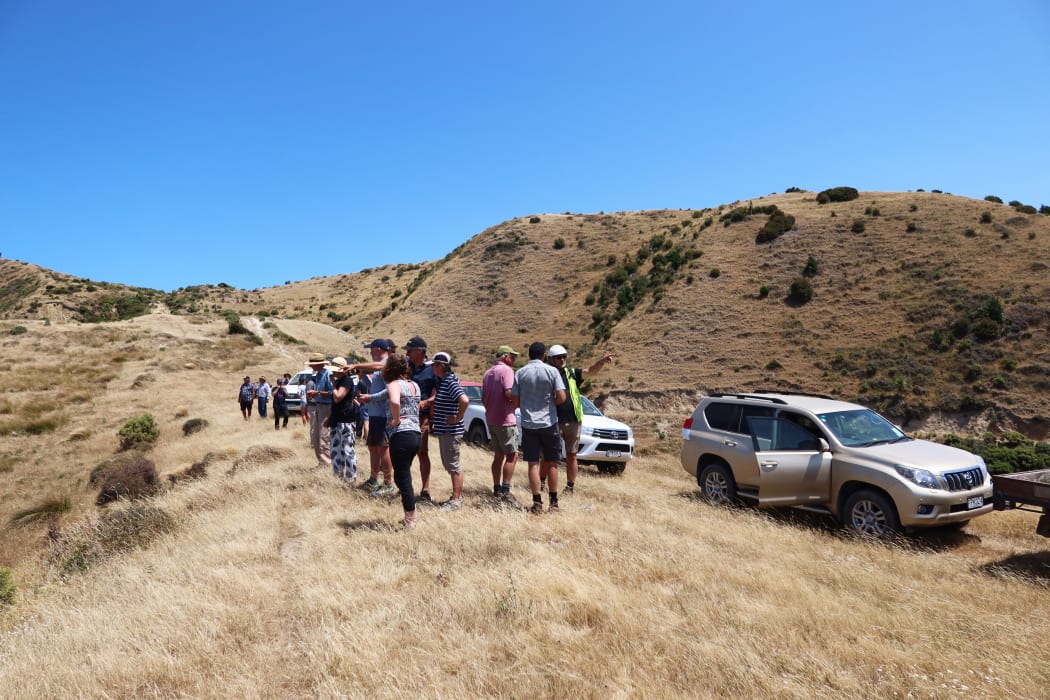
The East Coast Protection Group invited the public to tour The Needles in January last year and discuss the environment. Photo: LDR / Chloe Ranford
The Recreational Access with Education group, made up of quad-biking fishers, had tried restricting areas using log barriers and putting out a Voluntary Code Of Conduct - the minimum standard of driving behaviour expected of users.
The code told motorists to drive below the high tide line, avoid marine growth, and stick to 25km/h at Cape Campbell.
Meanwhile, the East Coast Protection Group (ECPG), whose members were conservationists and coastal landowners, had held multiple public information days at the coast in the hopes of changing the behaviour of beach-driving motorists.
Group chairperson Rick Stolwerk, who owned land near Ward, said it was clear that education alone would not be enough.
"Groups like RAwE [the Recreational Access with Education group] are doing an amazing job of educating 4WD bike users but, as always, the few ruin it for the many," he said.
"Legislation, backing education initiatives, is needed to prevent any further degradation of this pristine and vulnerable environment ... ECPG believes that the only way to protect this coastal area is a complete ban on all vehicles."

Local Democracy Reporting is a public interest news service supported by RNZ, the News Publishers' Association and NZ On Air.
